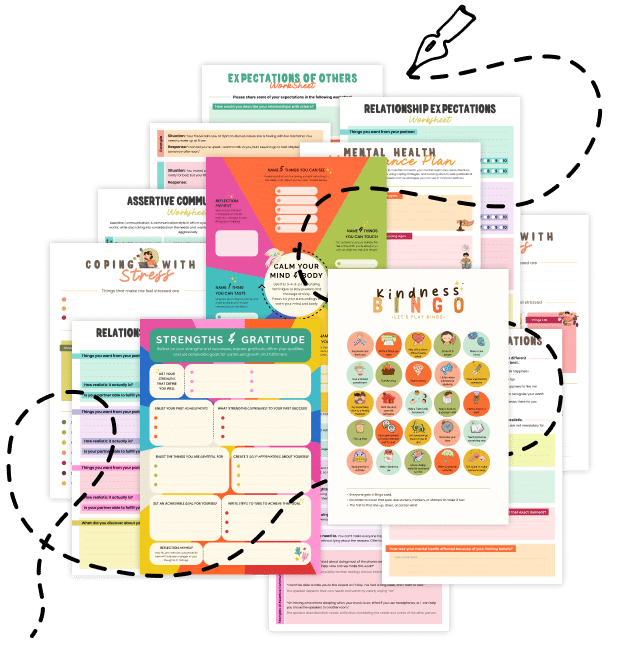20 Things About Mind Mapping for Non-Linear Thinkers
Boost your creativity and organization with these 20 insights on Mind Mapping for Non-Linear Thinkers—what it is, why it matters, and how to harness its power for clearer thinking and problem-solving.
1. What Is Mind Mapping?
Mind Mapping is a visual technique that arranges ideas and information in a branching, radiating format. Non-linear thinkers often find it helpful because it captures their thoughts in a free-flowing, flexible structure instead of rigid outlines.
2. Why Mind Mapping for Non-Linear Thinkers?
Instead of forcing you into a strict sequence, mind maps let ideas unfold naturally. If your brain jumps around between concepts, a mind map follows your train of thought without losing coherence.
3. Brainstorming Made Easy
With a central theme in the middle, you can quickly branch out to related ideas. Jot down keywords, doodle images, or color-code sections to capture spontaneous insights as they come.
4. Reduces Cognitive Overload
By using short phrases and visuals, you avoid clutter. This format lightens your mental load—helping you see the “big picture” without drowning in details.
5. Excellent for Problem-Solving
Stuck on a tricky issue? Drawing it out in a mind map often reveals hidden connections or fresh angles. Non-linear layouts are ideal for spotting patterns you might miss in a standard list.
6. Fosters Creativity
Mind maps encourage you to explore tangential or surprising ideas. Free association thrives here, helping you generate novel concepts before narrowing down the best ones.
7. Boosts Memory Retention
A mind map’s combination of color, images, and keywords taps multiple brain pathways. This multi-sensory approach can make it easier to recall information later.
8. Suits Diverse Learning Styles
Visual learners love the diagrams, kinesthetic learners can engage by drawing or rearranging notes, and even verbal learners benefit from summarizing each branch with concise text.
9. Digital vs. Paper
Both methods work well. Paper mind maps are tactile and unconstrained by screen size. Digital tools allow easy edits, links, and collaborations. Choose whichever aligns with your workflow—or use both.
10. Organized Chaos
Mind maps strike a balance between structure (central theme + branches) and creative chaos. You stay organized without feeling boxed in by bullet points or linear outlines.
11. Enhances Reading and Note-Taking
Instead of line-by-line summaries, convert chapters or meeting notes into mind maps. You’ll retain key points more effectively and see relationships between topics at a glance.
12. Encourages Meta-Thinking
When you step back to see how branches connect, you practice meta-thinking—thinking about how you think. This awareness helps refine your approach to complex tasks.
13. Everyday Applications for Mind Mapping for Non-Linear Thinkers
- Planning Projects: Break large goals into subtopics, deadlines, and tasks.
- Learning New Skills: Map out modules, resources, and practice exercises.
- Personal Growth: Track habits, journal reflections, or brainstorm life decisions.
14. Collaboration and Teamwork
In group settings, mind mapping fosters inclusive brainstorming. Everyone adds sticky notes or digital ideas to the same central theme, promoting synergy and creative collisions.
15. Overcoming Perfectionism
Because mind maps are fluid, there’s less pressure to get everything “right” from the start. You can rearrange branches, add or remove sections, and refine ideas as you go.
16. A Tool for Reflection
Mapping your thoughts on a conflict, setback, or emotional issue can help you see contributing factors and potential solutions. It externalizes your mind’s storm, clarifying emotions and next steps.
17. Mind Maps and Presentations
Speakers can use mind maps to outline their key points, ensuring they don’t miss important details. Visual references keep the talk dynamic and engaging for the audience.
18. Future-Proofing Your Ideas
Having a mind map record of your brainstorming sessions means you can revisit them anytime—weeks or months later—to spark new ideas or track progress.
19. Avoiding Pitfalls
- Overcrowding: Keep branches concise; too many words can muddle clarity.
- Rigid Structures: Don’t force sections that don’t flow. Let the map adapt to your thinking.
- Neglecting a Review: Schedule time to revisit and refine your map, or it becomes a forgotten sketch.
20. Related Topics to Explore
- Conceptual Chunking: Group related ideas for clearer thinking—perfect for mind map branches.
- Cognitive Load Theory: Understand how reducing mental load can enhance your learning.
- Polymathic Thinking: Broaden your intellectual horizons by linking diverse fields in your map.
- Gray Thinking: Embrace nuance in your mind maps by exploring multiple perspectives.
Quick Tips to Boost Mind Mapping for Non-Linear Thinkers
- Start with a Central Theme: Pick a clear focal point—like a problem statement or goal—to anchor your map.
- Use Colors & Icons: Different hues or small drawings help you spot related clusters at a glance.
- Limit Text: Use keywords and short phrases instead of full sentences—let visuals do the heavy lifting.
- Go Step-by-Step: Expand each branch gradually, adding details only when needed.
- Review & Revise: Schedule a quick pass to tidy up or rearrange branches—this cements your understanding.
Mind Mapping offers a powerful avenue for non-linear thinkers to channel their creativity into structured yet flexible outlines. By leveraging visual cues, branching logic, and minimal text, you’ll maintain the spontaneity of your ideas while ensuring nothing important slips through the cracks. Share this article with fellow out-of-the-box thinkers—help them harness mind mapping for enhanced clarity, creativity, and productivity!


